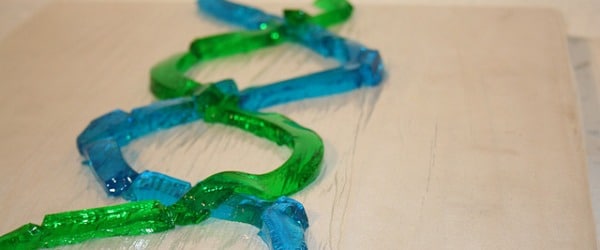We’ve all been there. You’re looking to replicate a result you have read in a paper, or maybe even one that has come from someone else in your own lab. But try as you might, you can’t get your head around the less than effective lab protocol that’s been provided.
Or, worse still, you are convinced you are doing everything correctly, but you just can’t seem to get things working. Of course, it might be that the original data is flawed. But it could equally be the result of a poorly written set of methods.
Good methods are the backbone of good research, and with replication problems seemingly becoming ever more common in science, it’s as important as ever to be able to write your own effective lab protocols, so that this problem will not be passed down to the next batch of scientists.
We covered the why’s of writing detailed protocols previously, this article aims to tell you how!
Structure of an Effective Lab Protocol
Use a Template Protocol
The first step should be to decide on your layout. The best option is to have a set structure that can be used for multiple different procedures, that way you will come to know where to find any given information. Your department may have a layout for you to use, and if so, life becomes much easier. And if not, feel free to our template, which you can download here for free!
You will also find a wealth of options online, on specialist websites that can also provide you with template and editing tools, such as Labfolder, hivebench or protocols.io, which can even give your protocol a DOI that can be cited by others.
Effective Lab Protocols Include All Reagents and Equipment Required
If you are really starting from scratch, it’s a good idea to start off with a list of all reagents and equipment required, along with details of the source and catalogue numbers of your consumable items, so that they can be easily replenished when they run out. This will come in very handy when it comes to writing up papers, where such information is almost always requested.
Next, I also find it useful when using homemade or communal stock buffers or solutions to write clear instructions on how these should be made up, and how and where they should be stored afterwards. This is something that people often forget, and it can be really infuriating.
Effective Lab Protocols Cover Safety Too!
Along with the above, you should ensure you include important safety information that may be relevant to any solutions and chemicals. Any detail that would be needed to, for example, safely use and dispose of any substances you will be using should also be included here.
You may find it helpful to list any references to papers or other protocols you have used to help anyone who needs more background detail (but hopefully you will have provided that yourself).
After that comes the protocol itself, which I will expand on in the next section.
What Should I Include in the Main Protocol?
Detailed Protocols Are Effective Lab Protocols
The most important thing to consider is that anyone performing your protocol for the first time ever will need more guidance than you might first think. To you, it may seem obvious that you need to vortex your sample for a certain length of time, but to someone else it may simply not occur to them.
Remember, detail, detail, detail! If you were making a nice meal, you wouldn’t expect to have to follow a long recipe that at the end simply said “bake”. You would want to know the temperature and time needed, and so a lab protocol is the same. So, for example, instead of saying “spin samples down”, say “spin at 12 000 xg for 10 minutes at 4oC”, much more useful!
Break up Walls of Text with Numbered Points
Another important consideration is to make sure your text is easy to follow. I prefer short, numbered key points rather than a wall of intimidating looking text. This makes your protocols much easier to read and follow. Something else to pay close attention to is the order of your points. For example, you may want to say at the start of the protocol if a heat block needs to be pre-set to a certain temperature, to make sure there are no delays later, which could be detrimental to your precious samples.
Make It Personal with Tips and Tricks
Perhaps the biggest key to an effective lab protocol is to let your experience with the method show. This comes from the little tips or techniques that you would know, but that someone performing the experiment for the first time may not.
A specific example: when spinning samples where you expect small or barely visible pellets, which mustn’t be accidently removed, it is a good idea to put all your tubes in the centrifuge in the same orientation. That way you can use samples where you find pellets to show you where they are likely to be in the samples where they are harder to see by eye, making it much easier to avoid accidently disturbing them in the next steps – a highly frustrating and time-consuming possibility that could easily be avoided.
It is also useful to leave space in your protocol to add these little tips as and when you find them, to benefit future users.
Where Should I Keep My Protocols?
The last step is to think about where best to store your protocols. Written in your lab book is all well and good, but what if that book gets lost or damaged? You don’t want that wisdom to be lost too! I find keeping a copy on a cloud system that’s easy to access and share with others a good starting point. We also keep hard copies in the lab for quick reference for anyone who needs them. But in general, the best option is to have copies in multiple places, as with any file, so that if one gets lost, there is always a back up to fill the gap.
Another great option is to store them using one of the websites I mentioned earlier, this means you can share your protocols with anyone, and by letting other people try them out there is every chance you will be able to refine them even further.
So, there are my hints and tips for writing an effective lab protocol. I hope you find them useful, but please do comment on this post with your own ideas. Science is best when its collaborative, and by making sure our protocols are good, we can help to ensure our methods are as rigorous, repeatable and complete as they should be.
For more tips and tricks on putting together protocols, see our article on ‘Making Something out of Nothing: How to Put Together a New Protocol’.







